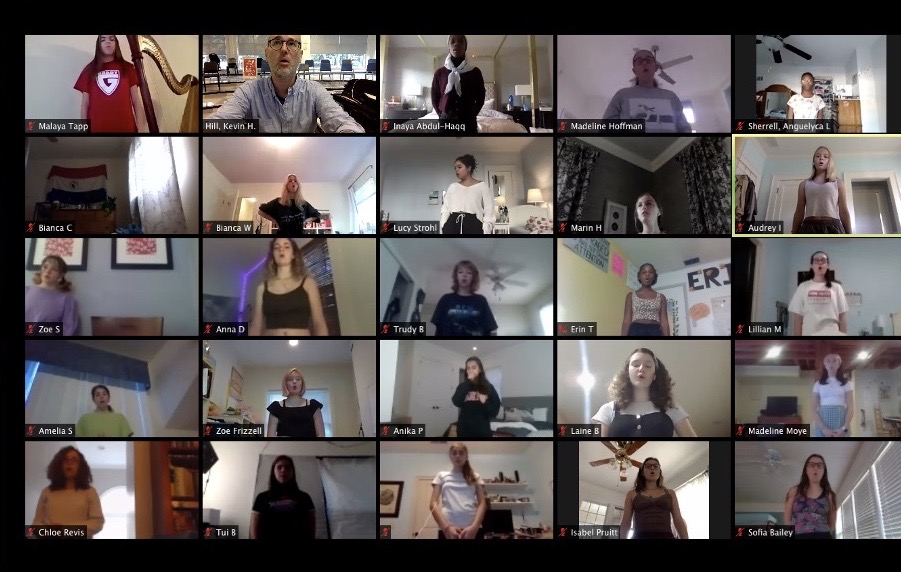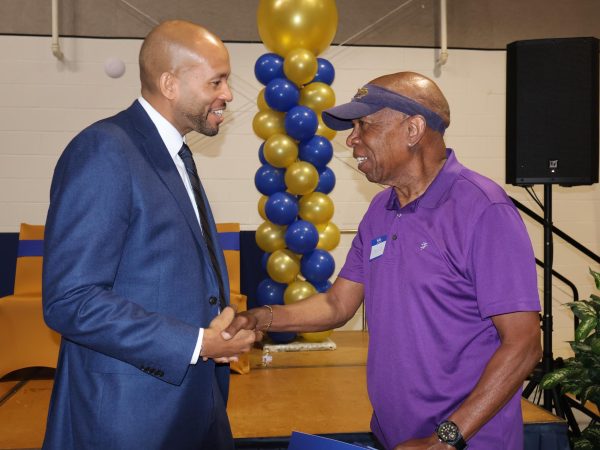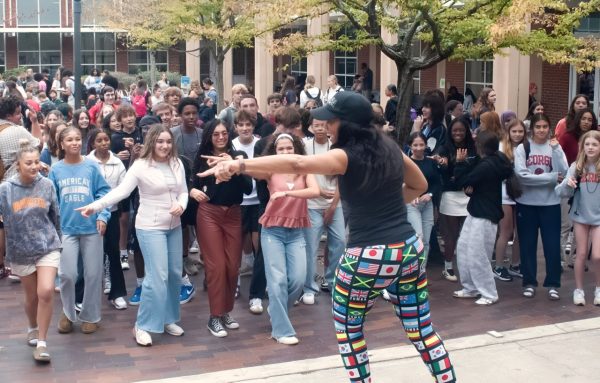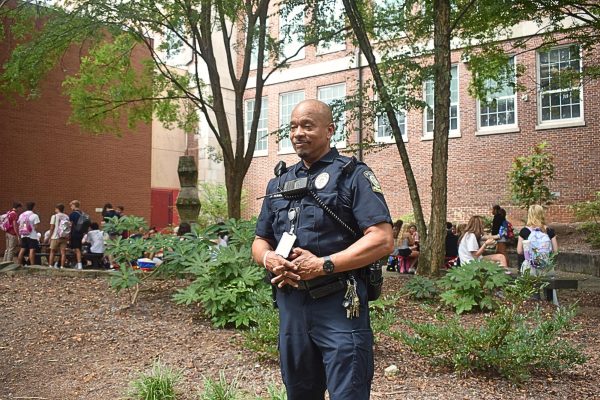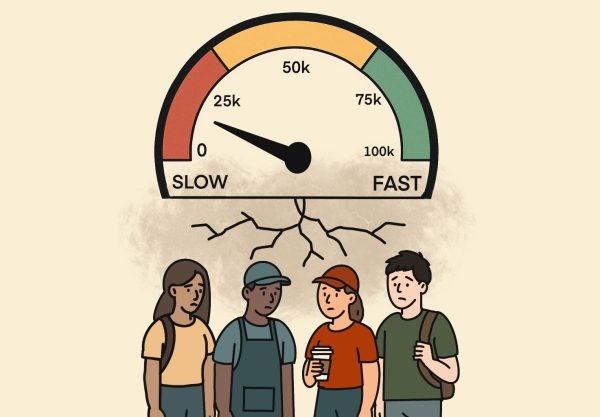Students and teachers adjust to the start of virtual learning
The Mastery Women’s chorus do their warm-ups while on mute.
Since the start of the school year has been completely virtual, some students have encountered technical issues with the online video platform, Zoom. Every week, multiple students have problems accessing classes.
“Some students had trouble getting in the Zoom meetings, but were eventually able to get on,” chorus director Kevin Hill said.
Although most teachers are adjusting to this new way of teaching and students are trying their best to stay motivated, some still find it challenging at times. Students especially have a hard time when there’s no one around to fully monitor their actions.
“I am currently in Mastery Women’s chorus, and I’ve definitely noticed that I’ve been sliding back into some bad singing habits like bad posture, not singing with tall vowels and not being fully present when I’m singing,” sophomore Malaya Tapp said. “When you don’t have anyone else to hold you accountable, it’s easy to go back to bad habits, and I think those things will be the hardest to break when we return to school.”
Some students believe Zoom isn’t a great substitute for in-person learning because they aren’t learning the same way they would in person.
“For me, Zoom has a negative effect on my classes,” sophomore Shakira Lewis said. “Especially when I’m learning a new language, I think it’ll be better for me to be in a classroom and be more hands on.”
Teachers worry Zoom makes it harder for students to move at the pace they need. Teachers generally try to move class along faster so all of their classes are caught up. As a result of virtual classes, they have to teach at a slower pace and take time making sure everyone is connected and on the same page.
“I’ve had to change the pace of the class. Before, I could move a little fast in class,” Spanish teacher Victoria Goya said. “Now we have to go a little slow. We have technology issues that make class go slower.”
Teachers use certain apps and tools to meet every students’ needs. This makes it easier for students when they are able to use gadgets they’re familiar with in all courses.
“I use Nearpod to do activities during the class and any other tool that will get the students to engage and participate during the virtual instructions, giving me an idea of what they are learning,” Goya said. “Breakout Rooms in Zoom is also a great tool that allows me to talk in small groups and have more interactions.”
Some teachers believe that even though some students have been doing great with virtual learning, there are many who have not. A few students have found ways to avoid participating in class or get away with doing substandard work.
“The majority of my students log on and do all of their work, then there are others that take advantage of the virtual learning and always come up with an excuse to leave, or they won’t participate in anything,” Spanish teacher Aquiles Loero said.
There has been a learning curve in the first few weeks of virtual learning. Teachers and students are still exploring innovative ways to make the semester less stressful and more productive.
“While trying to be completely virtual all day, I have changed my schedule around multiple times,” Loero said. “The things I did before, like going to the gym, going out multiple times a day, and just having free time, I can’t do anymore. This has even affected my eyesight.”

